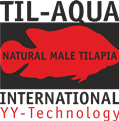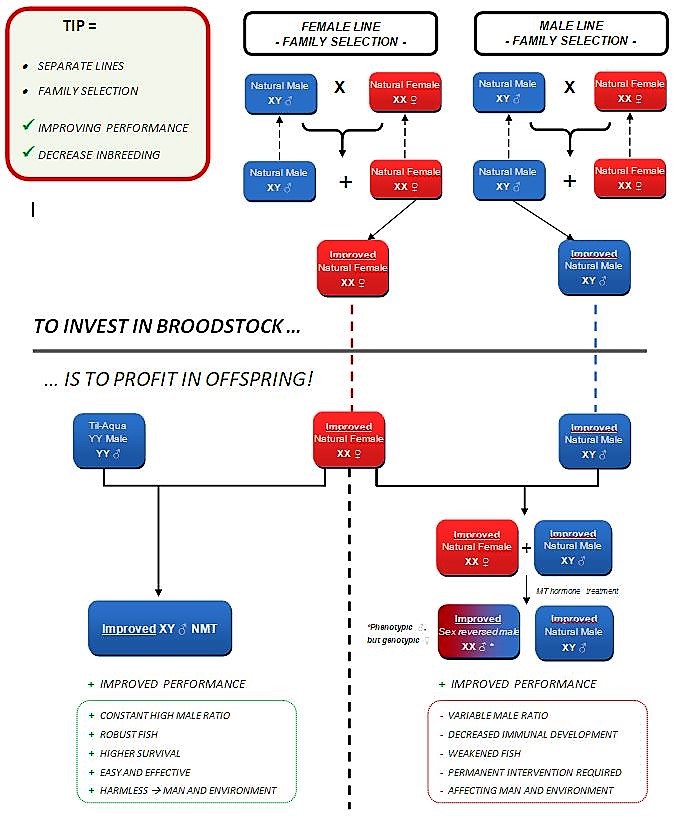Read this most interesting article about our genetics.
According to a recently published article in the scientific newspaper Aquaculture International, the fish originating from Til-Aqua International are genetically more diverse than the other strains that were included in this study.
The aim of the study was to determine the level of genetic diversity and differentiation of eight populations of Nile tilapia (Oreochromis niloticus) strains imported in Tanzania. Four of the studied strains originated from Thailand, three from Uganda, and one from Til-Aqua International (the Netherlands). The researchers concluded that “The breeding history and hatchery practices used to manage these stocks prior and after import appear to be the main factors for the genetic diversity observed in this study.” This is also what Til-Aqua International is promoting; a good genetic program is the basis for sustainably improving the tilapia industry.
The Natural Male Tilapia (NMT) from Til-Aqua is a cross of two genetically separated and individually selected tilapia strains. The male parent is originating from the so-called “YY line” whereas the female originates from the so-called “Mixed Sex line”. As a result, the NMT offspring is a strong male fish with a relatively high heterozygosity. This was confirmed in this research, as the Silver strain from Til-Aqua was the only one of eight strains within this research that showed a higher observed heterozygosity then the expected heterozygosity.
Similarly, of all eight strains within the scope of this research the Til-Aqua Silver strain had the lowest inbreeding coefficient, represented by the lowest Fis value (even negative). The Fis value (inbreeding coefficient) is the proportion of variation in the subpopulation – contained in an individual. A high Fis value implies a considerable degree of inbreeding, while a low Fis value is an indication for less inbreeding.
The same positive effects are to be expected when a male from the YY line is crossed with a female from a local strain. Although this local female strain might be inbred, the combination of two genetically different strains will still increase heterozygosity and robustness in the offspring.
As such the YY Technology is not only the preferred option to obtain all-male offspring, it also ensures the offspring to be stronger than its parents. This is not the case for traditional farming where in general both males and females from the same genetic origin, producing mixed sex population which requires harmful hormone administration to obtain an increased male ratio.
For more background information, see the link to the scientific article online: https://doi.org/10.1007/s10499-019-00472-5

